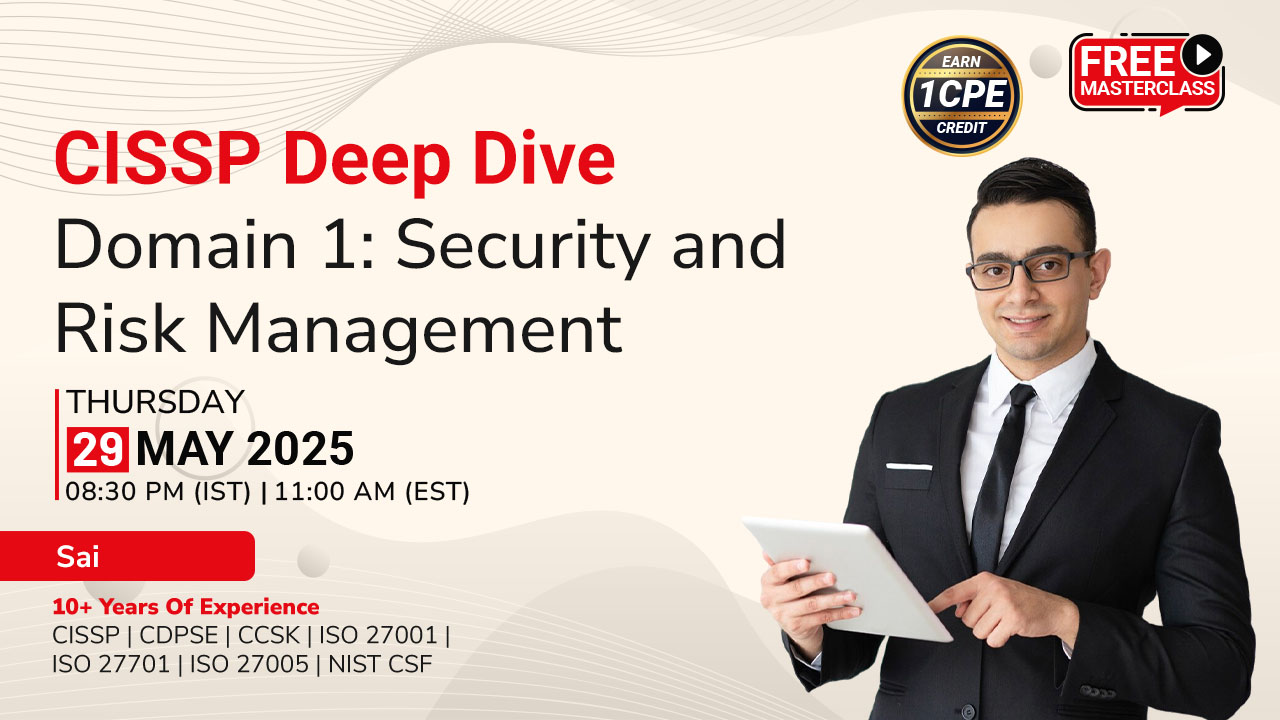CRISC Domain 1: Governance

What is Governance?
Governance involves the duty of supervising and safeguarding an entity’s assets, typically managed by the directors or board of an organization. These individuals establish strategic goals and policies, while the senior management team keeps an eye on the daily operations, ensuring alignment with the established strategies. This organizational structure is prevalent across different types of entities such as corporations, cooperatives, and partnerships, although specific titles and roles may differ.
Examples of Governance
Imagine a company like Apple. The board of directors decides on the big-picture strategies – like entering a new market or launching a new product line. Then, the senior management, including the CEO and other executives, takes care of the everyday tasks to make these strategies work, like designing products, marketing, and sales.
Key Areas of Governance
Governance encompasses several critical areas within an organization:
- Financial accountability: Ensuring financial resources are used effectively and responsibly.
Apple regularly reports its financial performance to investors, ensuring transparency and accountability in the use of financial resources. For example, they meticulously track their revenue streams, expenses, and investments, providing detailed financial statements during quarterly earnings calls.
- Operational effectiveness: Overseeing the efficiency and effectiveness of operations.
Apple focuses on optimizing its operations to ensure efficiency and effectiveness. This includes streamlining manufacturing processes to minimize waste and maximize output. For instance, their supply chain management strategies are renowned for their precision and efficiency, allowing them to deliver products to market swiftly.
- Legal and regulatory compliance: Making sure the organization adheres to laws and regulations.
Apple dedicates significant resources to ensuring compliance with laws and regulations of the country of operation. For example, they closely follow consumer protection laws, privacy regulations, and intellectual property rights, which are essential in the technology sector.
- Fair labor practices: Upholding ethical and fair treatment of employees.
Apple is committed to upholding ethical labor practices throughout its supply chain. They implement strict standards to ensure fair treatment of workers, including measures to prevent exploitation and ensure safe working conditions. For instance, they conduct regular audits of their suppliers’ facilities to assess compliance with labor standards.
- Social responsibility: Committing to socially responsible practices.
Apple demonstrates social responsibility through various initiatives, such as environmental conservation efforts and community engagement programs. For instance, they have made significant investments in renewable energy and have pledged to become carbon neutral across their entire supply chain. Additionally, they support education initiatives and charitable organizations, contributing to the communities in which they operate.
- IT governance: Managing IT investments, operations, and controls.
Apple meticulously manages its IT investments, operations, and controls to ensure the security and reliability of its technology infrastructure. For instance, they invest heavily in cybersecurity measures to protect user data and prevent cyber threats. Additionally, they carefully oversee the development and deployment of software and hardware products to maintain high-quality standards and user satisfaction.
The Role of Risk Management
Risk management is a vital component of governance. It involves understanding and addressing potential risks to prevent or minimize their impact on the organization. Effective risk management requires accurate information and proactive strategies to mitigate risks.
Case Study: In the realm of Information Systems (IS), effective risk management is paramount. This case study explores the significance of risk management.
Assessment of Organizational Risks: XYZ Corp., a multinational financial institution, conducted a comprehensive risk assessment to identify potential threats to its IS environment. Utilizing CRISC Domain 1 methodologies, the company evaluated internal and external risk factors, including cyber threats, regulatory compliance, and operational vulnerabilities.
Risk Identification and Analysis: Through systematic risk identification techniques, XYZ Corp. uncovered critical vulnerabilities in its network infrastructure and data management practices. Employing CRISC methodologies, the organization analyzed these risks based on their potential impact and likelihood, prioritizing mitigation efforts accordingly.
Risk Mitigation and Control: XYZ Corp. implemented robust control measures aligned with CRISC guidelines to mitigate identified risks effectively. This involved deploying advanced cybersecurity tools, enhancing employee training programs, and establishing strict access controls to safeguard sensitive information.
Continuous Monitoring and Improvement: By integrating continuous monitoring mechanisms, XYZ Corp. ensures proactive risk management and adapts to evolving threats in real-time. Regular audits and assessments, in compliance with CRISC Domain 1 standards, enable the organization to refine its risk management strategies and maintain resilience against emerging challenges.
Conclusion:
The case study underscores the indispensable role of risk management in safeguarding organizations against IS threats, emphasizing the value of CRISC Domain 1 principles in fostering a culture of security and resilience.
The Evolution of Governance
In recent years, the concept of governance has gained significant attention. This shift is due to the recognition of its importance in ensuring organizational success and preventing failures. Good governance leads to better decision-making and management, while poor governance can result in significant mishaps and losses.
Corporate Governance of IT
Specifically, in the realm of IT, governance ensures that the use of technology aligns with the organization’s goals and is managed effectively. This includes evaluating and directing current and future IT use.
Imagine a multinational corporation implementing a new software system. Corporate governance of IT ensures that this technology adoption is not only in line with the company’s strategic objectives but also managed efficiently. This might involve assessing the software’s compatibility with existing infrastructure, allocating resources appropriately, and monitoring its impact on productivity and security measures.
Objectives of Governance
The main goal of governance is to create value for stakeholders. This involves:
Benefits realization: Maximizing the benefits from resources and activities.
Risk optimization: Balancing risks and rewards.
Resource optimization: Efficiently using resources.
For instance, consider a company introducing a new online ordering system. Governance aims to make sure that this system adds value for everyone involved, like customers and investors. This means making the most out of resources, balancing risks to keep things safe, and using resources effectively to make the process smooth and efficient.
Governance vs. Management
It is important to understand that governance and management are different. Governance is about setting the direction and policies, while management is about executing these policies and running the organization. Good governance without good management, or vice versa, can lead to problems. For instance, a company might have great policies (good governance) but poor execution (bad management), leading to failure.
Four Key Governance Questions
Governance can be summarized by four critical questions:
- Right things: Are we focusing on the right activities?A company with CRISC-certified professionals may assess its information systems to ensure alignment with business objectives. They might prioritize IT investments based on risk assessments, focusing on projects that align with strategic goals and offer the most significant benefits.
- Right way: Are we approaching these activities correctly?
CRISC-certified professionals might implement best practices and frameworks like COBIT (Control Objectives for Information and Related Technologies) to ensure that IT governance processes are standardized and consistent. For instance, they might establish clear policies and procedures for risk management and ensure that employees are trained to follow them effectively.
- Execution quality: Are we performing these activities well?
A company might regularly conduct internal audits overseen by CRISC-certified professionals to evaluate the effectiveness of IT governance processes. They may review controls and procedures to identify the presence of any weaknesses or areas for improvement, ensuring that activities are executed with high quality and compliance standards are met.
- Benefits realization: Are we achieving the desired benefits?
CRISC-certified professionals might track key performance indicators (KPIs) related to IT governance activities to measure their impact on business outcomes. For instance, they might assess the reduction in cybersecurity incidents or the improvement in system uptime resulting from enhanced risk management practices, ensuring that desired benefits are being realized.
Final Words
Effective governance is crucial for any organization. It ensures that the organization not only performs its activities efficiently but also aligns these activities with its overall goals and values. This alignment is essential for creating value, optimizing risks, and utilizing resources effectively. If you want to understand and master Risks and Information Systems Control, then you can join InfosecTrain’s ISACA CRISC Training. Our highly interactive training will be worth your time and money.
TRAINING CALENDAR of Upcoming Batches For CRISC
| Start Date | End Date | Start - End Time | Batch Type | Training Mode | Batch Status | |
|---|---|---|---|---|---|---|
| 26-Jul-2025 | 17-Aug-2025 | 19:00 - 23:00 IST | Weekend | Online | [ Open ] |







 1800-843-7890 (India)
1800-843-7890 (India)